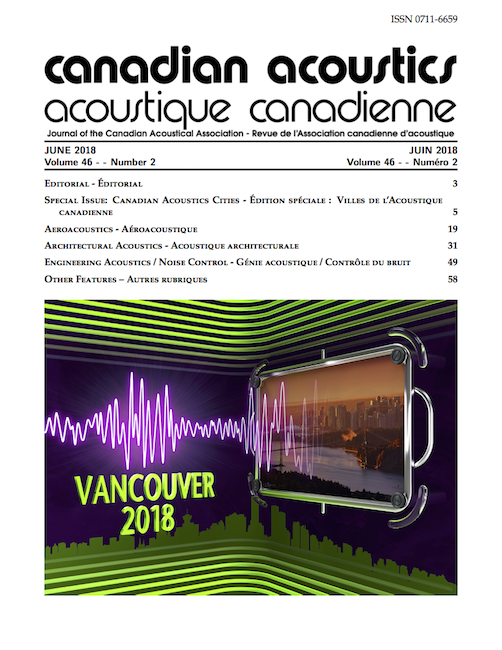Experimental Validation Of An Acceleration Power Spectral Density Aircraft Panel Model Given Different Excitations
Keywords:
Turbulent Boundary Layer, Analytical Model, Acceleration Power Spectral Density, Structural Acoustics, AeroacousticsAbstract
The noise and vibration in an aircraft cabin during cruise conditions is primarily caused by external flow excitations from the turbulent boundary layer (TBL). The TBL causes the fuselage panels on the aircraft to vibrate. These vibrations radiate sound energy in the form of noise. It is of interest to be able to predict the response of these panels to different excitations using an analytical model, so that expensive wind tunnel and flight tests can be minimized when doing noise research. Two existing analytical models were modified to account for different excitations: one with simply supported boundary conditions and the other with arbitrary boundary conditions. These models were programmed, using Matlab, to calculate the acceleration power spectral density (PSD), and radiated sound power (RSP). Models were validated against experimental data, obtained by the authors, for a thin rectangular panel with boundary conditions between simply supported and clamped conditions. It is shown that the modified analytical models accurately predict the panel response for a point force excitation, for a TBL excitation, and for an oscillating piezoelectric patch excitation.
Additional Files
Published
How to Cite
Issue
Section
License
Author Licensing Addendum
This Licensing Addendum ("Addendum") is entered into between the undersigned Author(s) and Canadian Acoustics journal published by the Canadian Acoustical Association (hereinafter referred to as the "Publisher"). The Author(s) and the Publisher agree as follows:
-
Retained Rights: The Author(s) retain(s) the following rights:
- The right to reproduce, distribute, and publicly display the Work on the Author's personal website or the website of the Author's institution.
- The right to use the Work in the Author's teaching activities and presentations.
- The right to include the Work in a compilation for the Author's personal use, not for sale.
-
Grant of License: The Author(s) grant(s) to the Publisher a worldwide exclusive license to publish, reproduce, distribute, and display the Work in Canadian Acoustics and any other formats and media deemed appropriate by the Publisher.
-
Attribution: The Publisher agrees to include proper attribution to the Author(s) in all publications and reproductions of the Work.
-
No Conflict: This Addendum is intended to be in harmony with, and not in conflict with, the terms and conditions of the original agreement entered into between the Author(s) and the Publisher.
-
Copyright Clause: Copyright on articles is held by the Author(s). The corresponding Author has the right to grant on behalf of all Authors and does grant on behalf of all Authors, a worldwide exclusive license to the Publisher and its licensees in perpetuity, in all forms, formats, and media (whether known now or created in the future), including but not limited to the rights to publish, reproduce, distribute, display, store, translate, create adaptations, reprints, include within collections, and create summaries, extracts, and/or abstracts of the Contribution.


